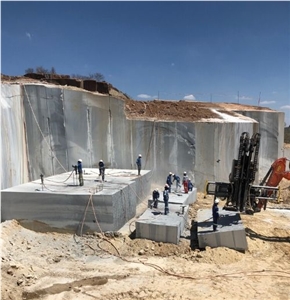Discovering the Rich History and Sustainable Practices of Granite Quarrying
As we depend on the precipice of discovering the intricate tapestry of granite quarrying, a trip through time exposes not just the physical act of drawing out stone yet additionally the social and historical significance woven right into the extremely material of this practice. From the ancient origins that laid the structure for contemporary quarrying methods to the lasting methods that are shaping the future of this industry, each sculpt mark on granite surfaces narrates waiting to be discovered (granite quarries in south africa). The legacy of granite quarrying extends far beyond simple removal; it is a testament to human ingenuity, durability, and the long-lasting appeal of this stunning rock
Old Origins of Granite Quarrying
Dating back to old civilizations, the technique of quarrying granite has been an indispensable part of human background and architectural innovation. The earliest proof of granite quarrying go back to ancient Egypt, where enormous pyramids and elaborate sculptures were crafted from this resilient rock. The Egyptians utilized primitive devices to draw out granite blocks from quarries, showcasing the value of this material in their huge building and constructions.
Moving onward in background, the Greeks likewise made considerable contributions to the quarrying of granite. The Greeks used granite in numerous architectural marvels, such as temples and statuaries, demonstrating their skill in shaping and carving this sturdy stone. The Romans even more refined the methods of quarrying granite, employing advanced tools like chisels and hammers to remove and shape granite for their famous frameworks.
Via the centuries, the technique of quarrying granite has evolved, with modern innovations improving performance while keeping the ageless allure of this all-natural rock - granite quarries in south africa. From ancient civilizations to contemporary contractors, the legacy of granite quarrying continues to form our globe
Development of Quarrying Methods
The advancement of quarrying techniques has actually been marked by a constant progression in the direction of higher performance and accuracy in drawing out granite. Early quarrying strategies involved hands-on labor with standard devices such as blades, hammers, and wedges to extract granite blocks from the earth.
Innovations in computer-controlled tools and 3D modeling have enhanced quarrying operations, leading to minimal environmental effect and improved sustainability methods. As the need for granite continues to increase, the evolution of quarrying strategies remains essential to conference sector requires successfully and sustainably.
Social Value of Granite
Granite holds a profound cultural importance throughout various civilizations due to its enduring visibility in architectural masterpieces and respected monoliths. From the stunning pyramids of Egypt to the complex makings of the Angkor Wat holy place in Cambodia, granite has actually been a material of option for revealing grandeur and long life in social heritage. In old Rome, granite columns embellished temples and public buildings, representing strength and permanence. The social importance of granite expands past its physical features; it personifies resilience, security, and timelessness, making it an icon of withstanding traditions and practices.

Sustainable Practices in Quarrying
Among the abundant history of granite quarrying and its cultural relevance lies a growing focus on lasting methods within the sector. As ecological recognition and concerns about resource depletion have actually increased around the world, the quarrying market has actually progressively accepted lasting methods to lessen its influence on the atmosphere and surrounding neighborhoods.

Furthermore, reclamation and rehabilitation of quarry sites post-extraction are indispensable to lasting practices. By recovering quarried areas to an all-natural or helpful state, such as producing wildlife environments or entertainment rooms, quarriers can offset the ecological impact of their procedures and contribute favorably to the local ecosystem.
Heritage of Granite Quarrying
With a historic background steeped in craftsmanship and commercial progression, what enduring effect has granite quarrying left on the landscape of contemporary culture? The heritage of granite quarrying goes beyond plain removal practices; it has formed building wonders, metropolitan landscapes, and social heritage worldwide. The resilient nature of granite has actually made it a preferred choice for monuments, structures, and infrastructure, standing as a testimony to the ability and virtuosity of quarry workers throughout generations.
Moreover, the economic footprint of granite quarrying can not be overlooked. The market proceeds to offer job opportunity and drive neighborhood economic climates in areas where granite removal is prevalent. It has likewise stimulated technical improvements in quarrying techniques and devices, bring about much more effective and lasting techniques.
In regards to sustainability, the tradition of granite quarrying consists of efforts to reduce environmental impacts via recovery jobs and responsible source administration. By stabilizing financial passions with environmental stewardship, the sector aims to ensure that future index generations can continue to profit from this long-lasting natural deposit.
Conclusion
